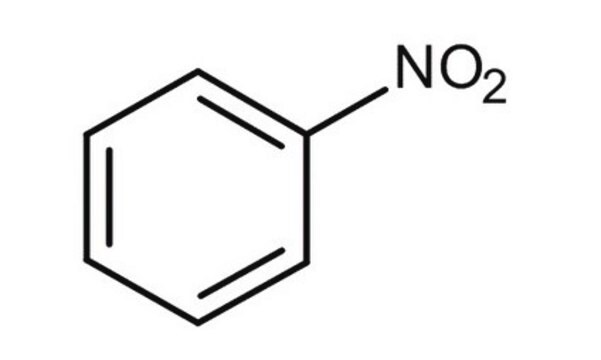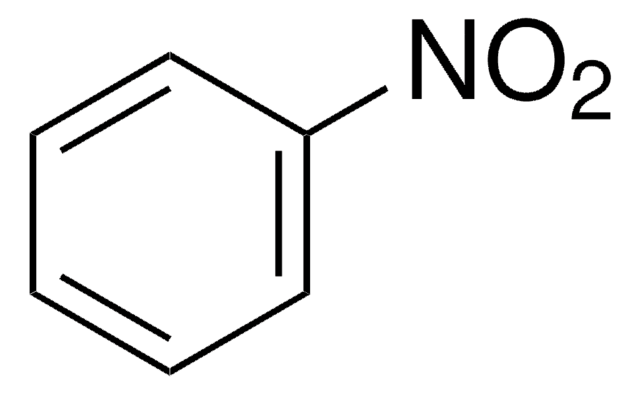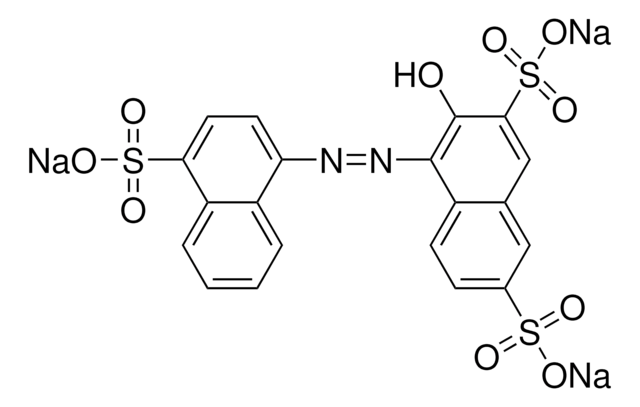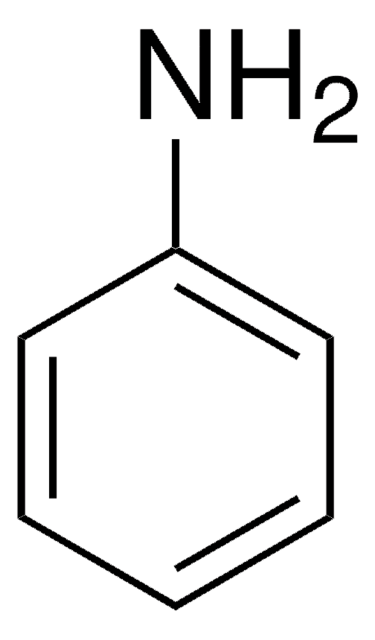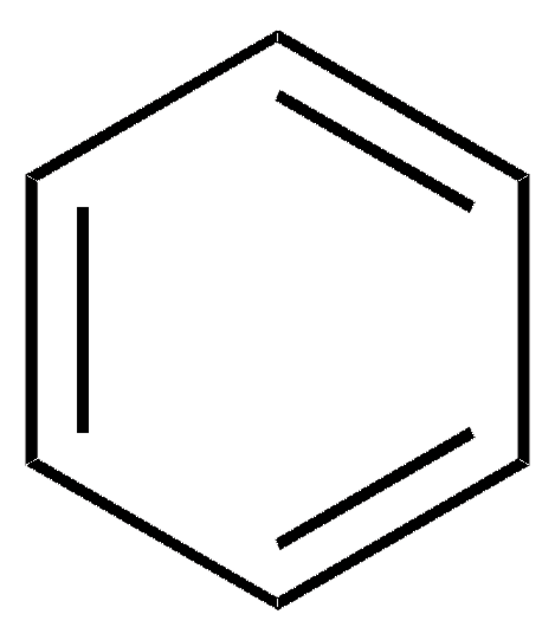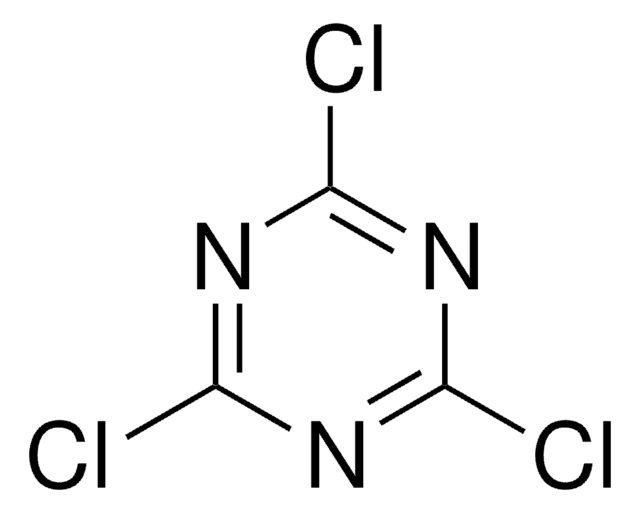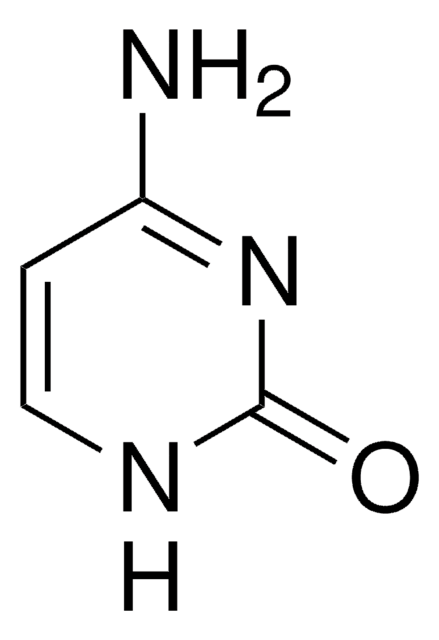Kluczowe dokumenty
06084
Nitrobenzene
PESTANAL®, analytical standard
About This Item
Polecane produkty
klasa czystości
analytical standard
Poziom jakości
gęstość pary
4.2 (vs air)
ciśnienie pary
0.15 mmHg ( 20 °C)
50 mmHg ( 120 °C)
linia produktu
PESTANAL®
Próba
≥99.0% (GC)
temp. samozapłonu
899 °F
okres trwałości
limited shelf life, expiry date on the label
granice wybuchowości
40 %
metody
HPLC: suitable
gas chromatography (GC): suitable
współczynnik refrakcji
n20/D 1.551 (lit.)
n20/D 1.552
tw
210-211 °C (lit.)
mp
5-6 °C (lit.)
gęstość
1.196 g/mL at 25 °C (lit.)
Zastosowanie
cleaning products
cosmetics
environmental
flavors and fragrances
food and beverages
personal care
format
neat
ciąg SMILES
[O-][N+](=O)c1ccccc1
InChI
1S/C6H5NO2/c8-7(9)6-4-2-1-3-5-6/h1-5H
Klucz InChI
LQNUZADURLCDLV-UHFFFAOYSA-N
Szukasz podobnych produktów? Odwiedź Przewodnik dotyczący porównywania produktów
Opis ogólny
Zastosowanie
Informacje prawne
Hasło ostrzegawcze
Danger
Zwroty wskazujące rodzaj zagrożenia
Zwroty wskazujące środki ostrożności
Klasyfikacja zagrożeń
Acute Tox. 3 Dermal - Acute Tox. 3 Inhalation - Acute Tox. 3 Oral - Aquatic Chronic 3 - Carc. 2 - Repr. 1B - STOT RE 1 Inhalation
Organy docelowe
Blood
Kod klasy składowania
6.1A - Combustible acute toxic Cat. 1 and 2 / very toxic hazardous materials
Klasa zagrożenia wodnego (WGK)
WGK 3
Temperatura zapłonu (°F)
190.4 °F - closed cup
Temperatura zapłonu (°C)
88 °C - closed cup
Środki ochrony indywidualnej
Eyeshields, Faceshields, Gloves, type ABEK (EN14387) respirator filter
Wybierz jedną z najnowszych wersji:
Masz już ten produkt?
Dokumenty związane z niedawno zakupionymi produktami zostały zamieszczone w Bibliotece dokumentów.
Klienci oglądali również te produkty
Nasz zespół naukowców ma doświadczenie we wszystkich obszarach badań, w tym w naukach przyrodniczych, materiałoznawstwie, syntezie chemicznej, chromatografii, analityce i wielu innych dziedzinach.
Skontaktuj się z zespołem ds. pomocy technicznej
